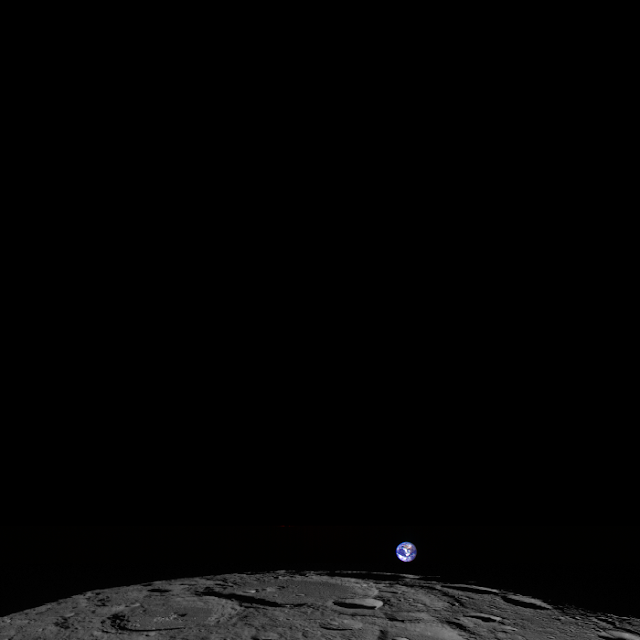LRO experiences twelve earthrises every day, however LROC is almost always busy imaging the lunar surface so only rarely does an opportunity arise such that LROC can capture a view of the Earth. On February 1, 2014 LRO pitched forward while approaching the north pole allowing the LROC WAC to capture the Earth rising above Rozhdestvenskiy crater (180-km diameter).
The LROC Wide Angle Camera (WAC) is very different than most digital cameras. Typically resolution is reported as the number pixels in a single image, a cell phone camera today has more than 5 million pixels (5 megapixels). A single WAC frame has only 9856 pixels, however the WAC builds up a much larger image by exposing a series of images (or frames) as LRO progresses in its orbit; this type of imaging is called "push-frame". Over a full month as the LRO orbit track progresses around the Moon the WAC builds up a collection of images that covers the entire globe.
Occasionally LRO points off into space to acquire observations of the exosphere and perform instrument calibration measurements. During these slews sometimes the Earth (and other planets) pass through the WAC's field of view and dramatic images such as the one shown here are acquired. In the opening image the Moon is a greyscale composite of the first six frames of the WAC observation (while the spacecraft was still actively slewing), using visible bands 604 nm, 643 nm, and 689 nm. The Earth is a color composite of later frames, using the 415 nm, 566 nm, and 604 nm bands as blue, green, and red, respectively. These wavelengths were picked as they match well the response of the human eye, so the colors are very close to true, that is what the average person might see. Also, in this image the relative brightness between the Earth and the Moon is correct, note how much brighter the Earth is relative to the Moon.
Image Credit: NASA/GSFC/Arizona State University
Explanation from: http://lroc.sese.asu.edu/posts/764




Incredible image. Thank you so much.
ReplyDeleteimpresionant
ReplyDelete